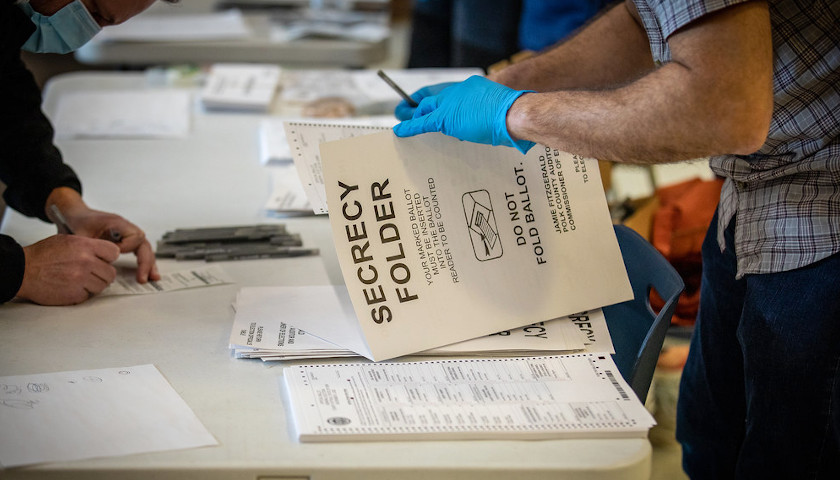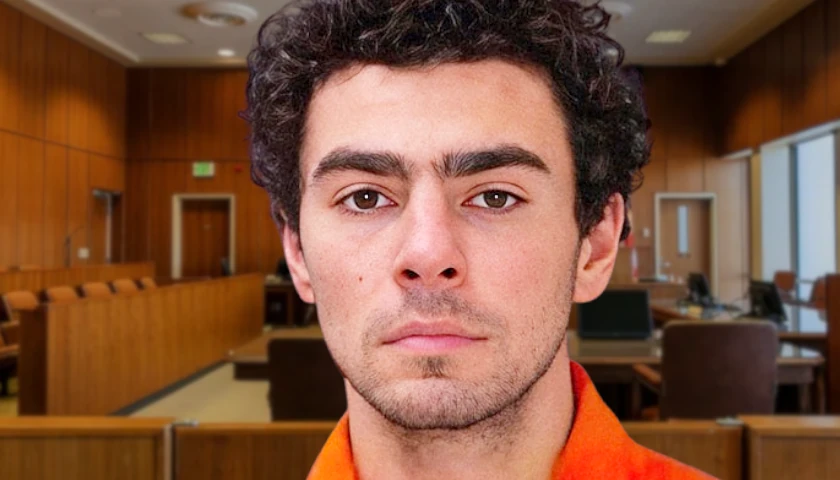A Fulton County elections report revealed extensive problems occurred with chain of custody and absentee ballot processing during the general election. The State Election Board contracted Seven Hills Strategies (SHS) to monitor Fulton County from its pre-electoral processes through the recent runoffs. An SHS monitor synthesized 270 hours of observation into a 14-page report, published last month. The monitor was careful to emphasize that they didn’t witness any fraudulent activity such as ballot stuff or double-counting.
In addition to multiple reports of absentee ballots sent to incorrect addresses, the monitor reported that the absentee ballot processing was “extremely sloppy” and rife with chain of custody issues. The monitor cited one example of the headquarter building functioning as both the additional voter verification area and a holding room for ballots between the mailroom and another processing room. The monitor stated that it witnessed staff members attempting to move unverified absentee ballots into a stack headed for State Farm Arena to be scanned and counted.
“Had [Registration Chief for Fulton County Ralph] Jones not been there with me to catch this mistake, it is safe to assume that those ballots would’ve been counted as if they had been verified,” shared the monitor.
In another incident related to chain of custody violations, the monitor learned from a staffer that workers weren’t signing out ballot batches to move them around the building between processing rooms. Additionally, the monitor noted that the sheer volume of absentee ballots compounded the county’s inefficient processing system to the point where absentee ballots weren’t processed by the next business day according to mandate.
Further, the monitor noted that staff and poll workers weren’t consistently keeping voter check-in records up to date properly, leading to “a great deal of confusion” over whether a voter had already voted – and contributing to voter fraud concerns. The monitor alluded that these issues occurred more frequently than what one would usually expect from normal human fallibility.
“Some human error is to be expected, but Fulton must strive to reduce the number of these instances,” stated the report.
The county didn’t fall short on everything. The monitor noted that signature matching was performed consistently according to the consent decree, poll workers were trained properly, a surplus of early voting locations were established, Election Day logistics were well-executed, and the risk-limiting audit was administered properly. The monitor added that the deficiencies observed during the general election were largely improved by the January 5 runoffs. The report credited Jones and his team for the runoff election improvements.
However, the monitor noted at the end in a report summary that there were widespread stories of voters being told they’d already voted or receiving multiple absentee ballots. The report suggested that faulty data entry was to blame.
Fulton County Board of Elections member Dr. Kathleen Ruth cited the issues outlined in the report on Tuesday during a vote on elections director Richard Barron. As The Star News reported earlier this week, the Fulton County Board of Elections issued a bipartisan 3-2 vote in favor of firing Barron.
On Wednesday, the Fulton County Board of Commissioners deadlocked in a 3-3 tie concerning the county board of election’s decision. One commissioner abstained their vote. Commissioners Bob Ellis, Liz Hausmann, and Lee Morris voted in favor of the motion. Natalie Hall abstained. Commissioners who voted against firing Barron were Marvin Arrington, Khadijah Abdur-Rahman, and Chairman Robb Pitts.
Since the commissioners were deadlocked on the vote, the measure will be taken up again for reconsideration during next month’s meeting. Until then, Barron will continue in his role as the elections director.
– – –
Corinne Murdock is a reporter at The Georgia Star News and the Star News Network. Follow her latest on Twitter, or email tips to [email protected].
Photo “Poll Worker” by Phil Roeder. CC BY 2.0.









By all means, let us be sure and keep the same sloppy questionable mess going. Why would we want votes legal and above board at all times?